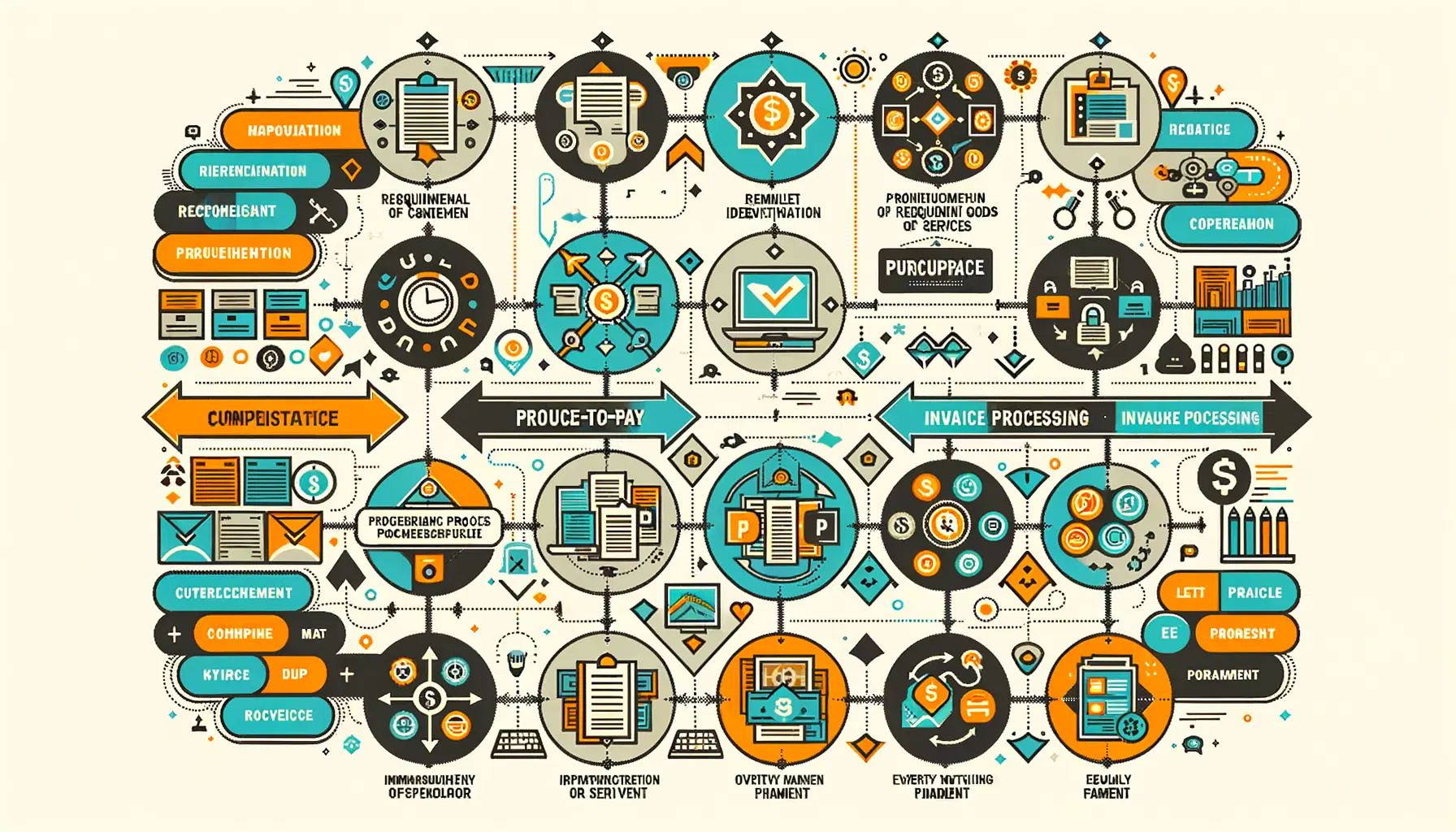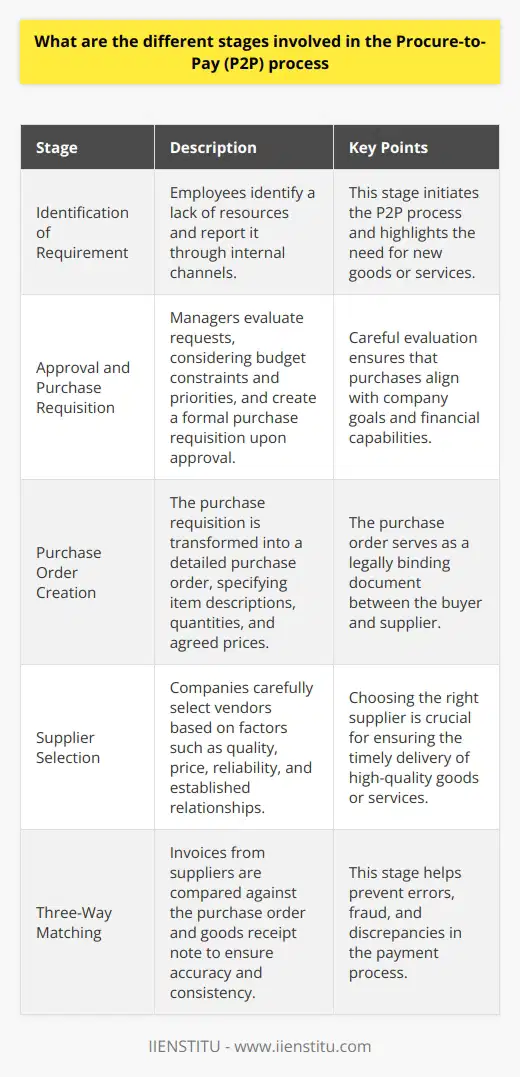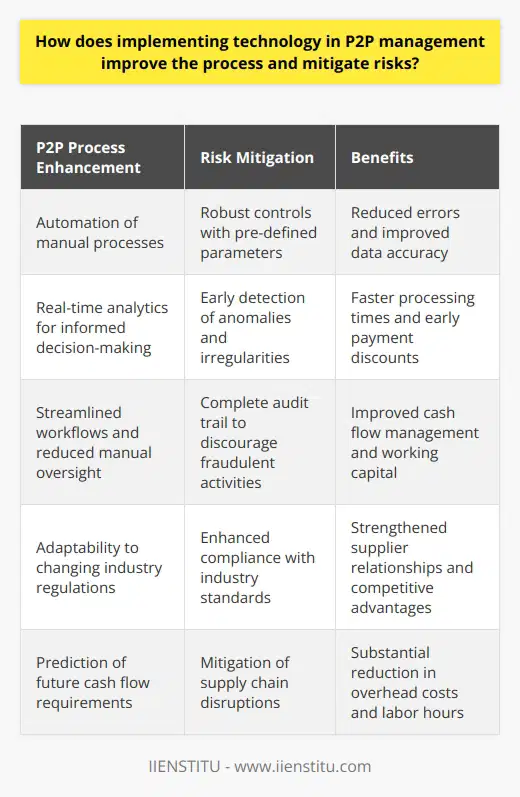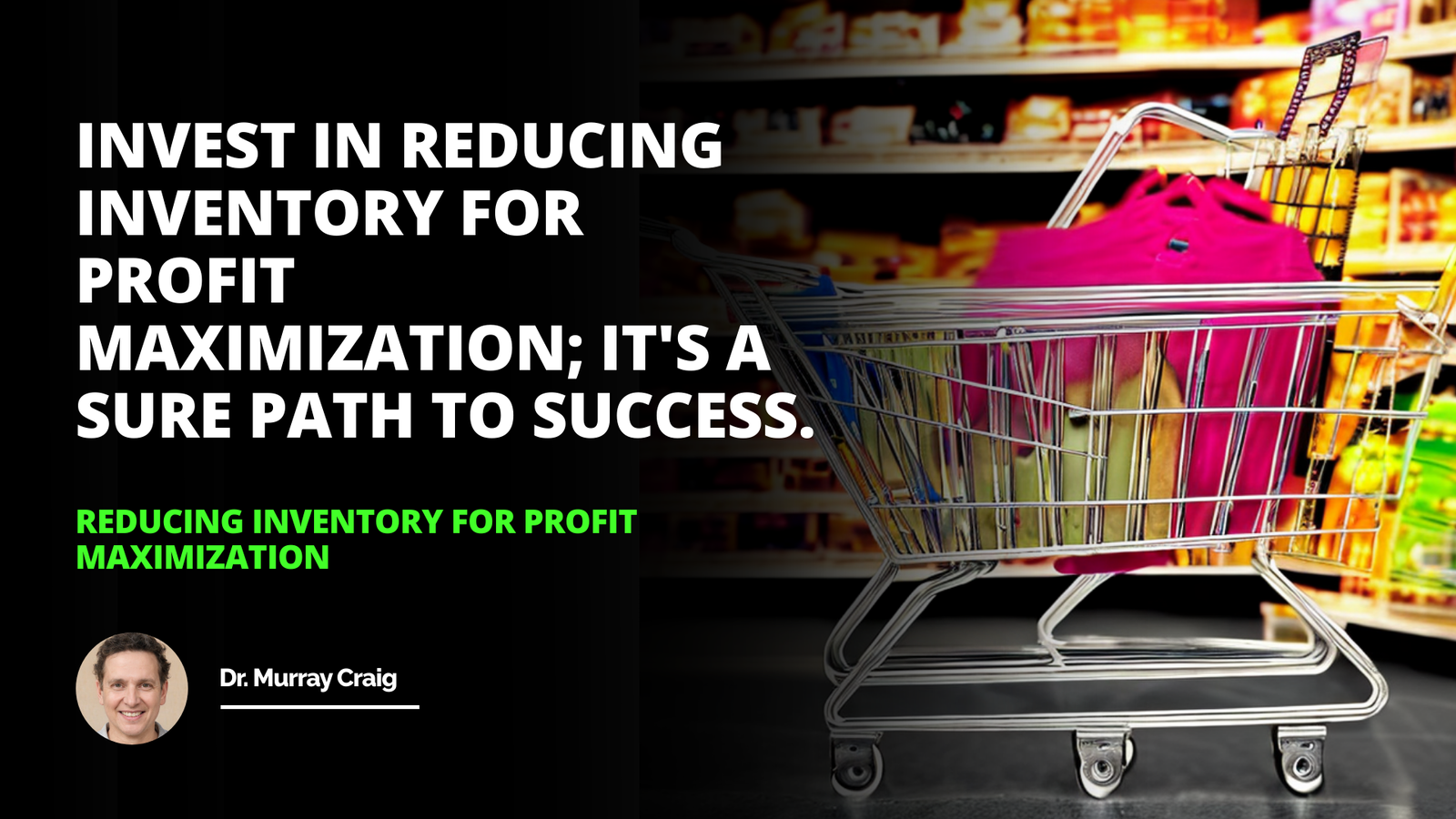
In the realm of business operations, efficiency and innovation are not just buzzwords but the cornerstones of competitive advantage and sustainability. Procure-to-Pay (P2P) systems embody this ethos by transforming how organizations manage their procurement and financial transactions. With business landscapes growing increasingly complex and data-driven, mastering the P2P process is not merely an option; it is a necessity for survival and growth.
As someone who has been involved in the implementation and management of P2P systems across various industries, I can attest to the transformative power of these systems. I recall my first encounter with P2P when I was working as a procurement manager for a multinational corporation. The company was struggling with inefficient processes, lack of transparency, and strained supplier relationships. The decision to implement a P2P system was met with skepticism and resistance from many employees, including myself. However, as we delved deeper into the intricacies of the system and witnessed the tangible benefits it brought, our perspectives shifted dramatically.
This article offers a comprehensive overview of the P2P landscape, providing insights into its function, process optimization, system features, implementation challenges, real-life applications, and the undeniable benefits it brings to modern-day enterprises. Drawing from my personal experiences and the collective wisdom of industry experts, I aim to provide a balanced and informative view of this critical aspect of business operations.
Understanding Procure-to-Pay (P2P) Process
The P2P process is a cornerstone of business operations, linking procurement directly to financial settlements. Understanding the intricacies of this system illuminates how businesses can leverage it to their advantage.
Overview of a typical P2P process
A typical P2P process starts with identifying the need for a product or service and ends with the payment being made to the supplier. Between these two points, myriad steps occur, including requisition of goods or services, purchase order creation, order fulfillment by the supplier, receipt of goods or services, invoice generation and validation, and finally, the disbursement of funds. Each of these stages relies on a smooth transition of information and goods, underscored by the precision of data and timeliness of action.
I vividly remember my first hands-on experience with the P2P process. It was a complex web of interactions between various departments, suppliers, and systems. Initially, it seemed overwhelming, but as I delved deeper, I began to appreciate the intricate dance of information and goods that kept the business running smoothly. It was a revelation to see how a well-executed P2P process could streamline operations, reduce costs, and foster better relationships with suppliers.
Benefits of well-executed P2P process for companies
Implementing an efficient P2P process offers manifold advantages. Efficiency and cost savings emerge from streamlining procurement activities, ensuring that companies do not spend more than necessary. This process also enhances supplier relationships by providing clear communication and timely payments, fostering trust and collaboration. Moreover, it enhances transparency and accountability within the company's operations, allowing for better oversight and decision-making.
In my experience, one of the most significant benefits of a well-executed P2P process is the ability to make informed decisions based on real-time data. With access to spend analytics, order statuses, and supplier performance metrics, managers can quickly identify areas for improvement and take corrective actions. This level of visibility and control was a game-changer for the organizations I worked with, enabling them to optimize their procurement strategies and stay ahead of the competition.
The stages of P2P process
At the core of P2P, you find the crucial stages of Supplier management, Order management, and Invoice approval and payment. Effective supplier management ensures a reliable supply chain and quality goods and services. Order management oversees order placements and confirmation, ensuring accurate and timely fulfillment. Finally, invoice approval and payment processes must be meticulous to prevent errors that could strain supplier relationships or cause financial inaccuracies.
I recall an instance where a supplier's invoice was lost in the shuffle of paperwork, leading to a delayed payment and a strained relationship. This experience taught me the importance of having a robust invoice approval and payment process in place. By implementing an automated workflow and a three-way matching system, we were able to eliminate such errors and ensure timely payments to our suppliers. The result was a significant improvement in supplier satisfaction and a more efficient financial process.
Key Features of a Good P2P System
The complexity of P2P systems demands careful consideration of the features which make them robust and adaptable to various business requirements.
Integration with enterprise resource planning (ERP) systems
Integration with ERP systems is vital for a seamless P2P system. This integration allows for the free flow of information across different departments, ensuring that procurement data aligns with financial and logistical information, enabling a more accurate and comprehensive view of organizational operations.
In one of my previous roles, we implemented a P2P system that seamlessly integrated with our ERP system. This integration allowed us to have a single source of truth for all procurement and financial data, eliminating the need for manual reconciliations and reducing the risk of errors. It also provided us with real-time visibility into our spend, enabling us to make informed decisions and optimize our procurement strategies.
Automated Workflow Processes
Automation in workflow processes facilitates prompt and error-free operations. Automated steps can include purchase requisitions, order confirmations, and three-way matching between purchase orders, receipt of goods, and invoices, thereby reducing the potential for human error and improving overall efficiency.
I have seen firsthand how automated workflow processes can transform procurement operations. In one instance, we implemented an automated purchase requisition system that allowed employees to easily request goods and services, while ensuring that all requests were routed through the appropriate approval channels. This automation not only saved time but also ensured that all purchases were compliant with company policies and budgets.
Real-Time Information Access
Instant access to information is central to decision-making in an agile business environment. A good P2P system provides real-time data concerning spend analytics, order statuses, and supplier performance, allowing managers to make informed choices quickly.
I once worked with a company that struggled with a lack of visibility into their procurement spend. They had multiple systems and manual processes, which made it difficult to get a clear picture of where their money was going. By implementing a P2P system with real-time information access, we were able to provide the management team with actionable insights into their spend patterns, supplier performance, and potential areas for cost savings. This information empowered them to make data-driven decisions and optimize their procurement strategies.
Potential Challenges and Solutions in Implementing P2P Systems
Every system implementation comes with its share of hurdles; P2P systems are no different. Awareness and preparedness for potential challenges is the first step in overcoming them.
Common issues faced by organizations
Organizations may face issues such as lack of process standardization, which leads to erratic procurement activities, and deficient supplier data, which can result in flawed ordering and payment cycles. Resistance to change among employees is also a significant barrier, as it can impede the smooth adoption of new systems and processes.
I have encountered these challenges in various organizations I have worked with. In one case, the lack of process standardization led to a fragmented procurement landscape, with each department following its own processes and using different systems. This made it difficult to get a holistic view of the company's spend and led to inefficiencies and duplication of efforts. In another instance, the resistance to change among employees was so strong that it threatened to derail the entire P2P implementation project.
Possible solutions for these issues
To combat these challenges, organizations might adopt solutions such as implementing standardization and simplification of processes to ensure uniformity, investing in data cleansing and enrichment to maintain an accurate supplier database, and fostering training and employee engagement to ease the transition to new practices and systems.
In my experience, the most effective way to overcome these challenges is through a combination of strong leadership, clear communication, and employee engagement. When implementing a P2P system, it is crucial to involve employees from all levels of the organization in the process, from the initial planning stages to the final implementation. This helps to build buy-in and ensures that the system meets the needs of all stakeholders.
Another critical aspect is investing in training and change management. Employees need to understand the benefits of the new system and how it will impact their day-to-day work. Providing comprehensive training and support throughout the implementation process can help to ease the transition and ensure that employees are comfortable with the new processes and technologies.
Real-World Examples of P2P Implementation
Drawing from successful P2P implementations can provide vital lessons for organizations looking to enhance their procurement processes.
Successful P2P implementation in multinational corporations
Multinational corporations that have successfully implemented P2P systems often report significant gains in efficiency, cost reduction, and improved supplier relationships. These outcomes result from the meticulous design and execution of P2P systems that cater to the complex needs of large enterprises.
One such example is a global consumer goods company that implemented a P2P system across its operations in over 100 countries. The company faced significant challenges in managing its procurement processes, with each country following its own processes and using different systems. By implementing a standardized P2P system, the company was able to streamline its procurement operations, reduce costs, and improve supplier relationships. The system provided real-time visibility into spend across the organization, enabling the company to make informed decisions and optimize its procurement strategies.
Benefits realized due to P2P implementation
The real-world benefits of P2P systems are observable in reduced process times, enhanced compliance with company policies and external regulations, and the generation of actionable insights from spend data. These outcomes play a central role in elevating the strategic role of procurement within the organization.
In one of my previous roles, we implemented a P2P system that delivered significant benefits to the organization. The system automated many of the manual processes involved in procurement, reducing the time required to process purchase orders and invoices. It also provided real-time visibility into spend, enabling the procurement team to identify opportunities for cost savings and negotiate better deals with suppliers. Additionally, the system ensured compliance with company policies and external regulations, reducing the risk of fraud and errors.
In conclusion, P2P systems are not simply a means to improve purchasing and payment processes within a company; they are strategic tools that can transform an organization's operational dynamics.
Recap of the importance and benefits of P2P
This overview has demonstrated that while challenges abound in the realm of P2P, the benefits - which include but are not limited to operational excellence and financial optimization - far outweigh the impediments, making P2P systems a worthwhile investment.
From my personal experience and the experiences of the organizations I have worked with, I can confidently say that implementing a P2P system is a transformative journey. It requires careful planning, strong leadership, and a willingness to embrace change. However, the benefits - in terms of cost savings, efficiency gains, and improved supplier relationships - are well worth the effort.
Encouragement for businesses to consider P2P implementation
Businesses aiming for peak operational effectiveness ought to consider P2P implementation seriously. With the shifting tides of global trade and commerce, those that skillfully navigate their procure-to-pay journey will not only survive but thrive in the competitive business ecosystem.
If you are considering implementing a P2P system in your organization, I encourage you to take the first step. Start by assessing your current procurement processes and identifying areas for improvement. Engage with stakeholders across the organization to build buy-in and gather requirements. And most importantly, don't be afraid to seek out the expertise of those who have successfully navigated this journey before.
In the end, the success of your P2P implementation will depend on your ability to embrace change, stay focused on your goals, and continuously improve your processes. But with the right approach and the right tools, you can unlock the full potential of your procurement operations and drive your business to new heights.
Frequently Asked Questions
What are the different stages involved in the Procure-to-Pay (P2P) process
Introduction to Procure-to-Pay
The Procure-to-Pay (P2P) process integrates purchasing and accounts payable systems. It ensures effective inventory management, supplier payment, and financial record-keeping. Organizations benefit from streamlined operations and improved cost control. Understanding P2P's distinct stages is essential for efficiency and compliance.
Stages of the Procure-to-Pay Process
Identification of Requirement
The journey begins with identifying a need. Employees notice a lack of resources. They report this through internal channels.
Approval and Purchase Requisition
Next, managers evaluate these requests. They consider budget constraints and priorities. Once approved, a formal purchase requisition (PR) gets created.
Purchase Order Creation
The PR transforms into a purchase order (PO). The PO details the requirement specifics. It includes item descriptions, quantities, and agreed prices.
PO Review and Approval
Before issuing the PO, a review occurs. It ensures the order aligns with company policies. Appropriate authorization finalizes the document.
Supplier Selection
Companies must select vendors carefully. They consider quality, price, and reliability. Established relationships often influence these decisions.
Order Management
After PO issuance, the supplier confirms receipt. They commit to fulfilling the order as specified. The buyer must manage this order until completion.
Goods Receipt Note
Upon delivery, the buyer checks the goods. A Goods Receipt Note (GRN) records this process. It lists received items and conditions.
Three-Way Matching
Invoices arrive from suppliers post-delivery. The three-way match principle applies here. It involves comparing the PO, GRN, and invoice.
Invoice Approval
If documents align, the invoice proceeds. Errors or discrepancies can cause delays. Corrections and confirmations are necessary for progression.
Payment Processing
With approval, the accounts payable team acts. They schedule and process the payment. Methods include electronic transfers, checks, or credit.
Record Keeping
Finally, thorough documentation is updated. All transactions appear in the financial records. Transparency and accuracy are crucial during this stage.
Conclusion
The P2P process is integral for operational fluidity and financial health. Each stage requires attention and governance. Companies leverage technology to ensure consistency and compliance. Understanding the P2P cycle fosters robust supplier relationships and organizational efficiency.

How does a robust P2P process enhance an organization's efficiency and financial control
Understanding P2P in Business Contexts
P2P stands for procure-to-pay. It is a business process. It starts when someone requests a good or service. It ends with payment. This cycle is central. It affects many organizational operations.
Efficiency Through Streamlined Workflow
Streamlined workflows cut delays. They make processes run smoothly. A robust P2P process does this well. Every step gets clearer. Employees spend less time on procurements. They make fewer mistakes. This leads to more efficient operations.
Automation Reduces Error
A key component is automation. It minimizes human error. Data entry mistakes drop. Order processing speeds up. Invoices match purchase orders quickly. This reduces the chance of overpayment. It prevents the purchase of unneeded items.
Centralized Data Improves Decisions
Centralized data aids transparency. Stakeholders see the procurement data. They make informed decisions. This improves budget adherence. It allows proactive financial management. It aids in predicting cash-flow needs.
Financial Control from Start to Finish
Financial control is critical. A robust P2P process provides it. Each step involves oversight. This processes approvals. It tracks budgets. It verifies payments. It ensures compliance. Visibility into expenditures rises.
Controlled Spending with Approval Workflows
Approval workflows control spending. They stop unauthorized purchases. They ensure funds are available. Budgets stay intact. Cash flow remains positive. The organization avoids unforeseen debt.
Real-Time Monitoring Aids Compliance
Real-time monitoring detects fraud early. It enforces policy adherence. It aids in audit preparation. Companies face fewer penalties. They maintain better regulatory relationships. This protects their reputation.
In Conclusion
A robust P2P process is key. It enhances efficiency. It tightens financial control. Organizations benefit greatly. Costs reduce. Workflows speed up. Decisions improve. Compliance becomes manageable. Success depends on it.
Implement P2P with care. Understand its importance. Enjoy its benefits. Aim for efficiency. Strive for control. Excel in the marketplace.

How does implementing technology in P2P management improve the process and mitigate risks?
The Nexus of Technology and P2P Management
Unveiling P2P Process Enhancement
P2P, or procure-to-pay, involves complex steps. From purchasing to payment, each step carries intrinsic risks. Technology streamlines these processes profoundly. It shifts manual entry to automated procedures. This leads to error reduction. Errors in manual processes can be costly. Inaccurate data compromises decision-making integrity. Automated systems ensure data accuracy. They offer real-time analytics. Businesses can thus make informed decisions quicker.
Risk Mitigation Through Technological Implementation
Risk management is pivotal in P2P cycles. Traditional methods rely on exhaustive checks. These are oftentimes inefficient. Technology provides robust controls. It sets pre-defined parameters for transactions. Anything anomalous triggers alerts. Early detection of irregularities is thus possible. Moreover, technology provides a complete audit trail. This discourages fraudulent activities. Compliance with industry standards becomes manageable. Technological solutions adapt to changing regulations. Compliance is, therefore, less burdensome.
Cost Reduction and Time Efficiency
Cost savings are evident with technology use. Automation reduces the need for manual oversight. It curtails labor hours. Overhead costs see a substantial drop. P2P cycles become less time-intensive. Faster processing times mean early payment discounts. Cash flow management improves. The organization's working capital benefits. Technology also predicts future cash flow requirements. Hence, planning for financial obligations improves.
Improved Supplier Relationships
Good supplier relationships hinge on punctual payments. Delays strain these relationships. Technology ensures timely payments. Supply chain disruptions lessen. Vendor satisfaction improves. Long-term relationships stabilize. Better negotiation for terms ensues. Organizations can leverage these relationships. They gain competitive advantages.
Conclusion
Implementing technology transforms P2P management. It offers higher accuracy and efficiency. Risks are significantly mitigated. Technology offers a competitive edge for businesses. It is vital for sustainable P2P process improvement.



